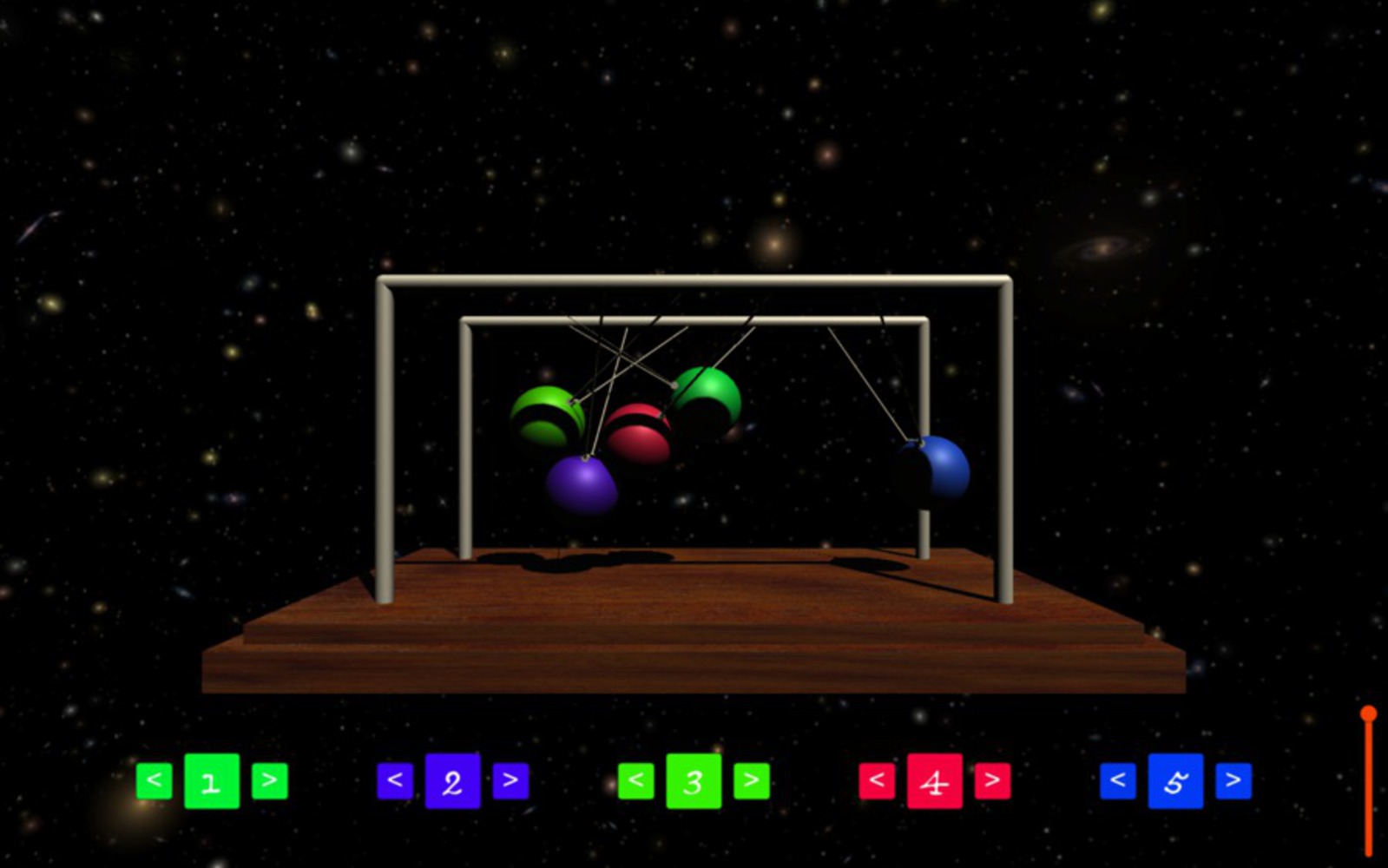Proposal
We are taking the Newton's Cradle that was made in module three and remaking it in a way that will work with the physics of the world we live in. To make sure this works, we will be making the Newton's Cradle in Unity so that if the physics don't work, we can change the physics. Also, making a virtual Newton's Cradle allows us to let users manipulate the space in which the Newton's Cradle exists by changing things like gravity or the material of the balls, which was impossible previously. The Newton's Cradle represents the beauty of science, and we hope to extenuate that representation to show a link between old science and new technology, expressing an idea of how old and new can be combined to create experiences we have never seen before.
Curatorial Statement
Newton's Cradle, Hunt Library, 2016
In 1703, physicist Christiaan Huygens studied collisions using pendulums. With this apparatus, he discovered laws governing impact that had never before been discovered, inspiring many other experimenters, including a nod from Newton himself. It was also the first inspiration for the modern Newton's Cradle, an iconic toy found on the desk of any good scientist or science teacher. The Newton's Cradle is a symbol of the fun of advancing science, so it's only natural that the Newton's Cradle should advance as does science. For this piece, the Newton's Cradle has been digitized to move the toy, and science itself, well into the 21st century to give a new generation the innovation and fun that the Newton's Cradle has brought generations of science enthusiasts.

